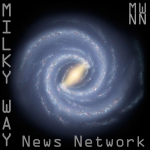“The British fleet would cut across the line of enemy ships … the name ‘Trafalgar’, the Spanish cape off which the battle would be fought, was sure to go down in history.” p. 73
 Image: Battle or Trafalgar, 21st October 1805 – Situation at 1pm (Nicholas Pocock, 1740-1821)
Image: Battle or Trafalgar, 21st October 1805 – Situation at 1pm (Nicholas Pocock, 1740-1821)
The twenty-first October, 1805 saw one of the landmark battles in naval history. At the moment of his greatest triumph, it also saw the death of Horatio Nelson. It’s the kind of thing people would find hard to believe if you were making a story up, but the truth can be as dramatic as fiction. I had a lovely day out at Greenwich and the National Maritime Museum making sure the details of the battle and Admiral Nelson were as accurate as possible.
Through history, it’s interesting to note the times when the great naval powers were different from the most powerful armies. I first remember it from my history lessons about the first Punic War. The Roman legions were masters on land; the Phoenicians from Carthage ruled the waves. There was an impasse until the Romans learned to sail and devised an ingenious means for turning a sea battle into something similar to land-based warfare. Later, in the second Punic War, the great Carthaginian general Hannibal took the fight to the Romans on land. He subjugated most of Italy, but hesitated when it came to sacking the great city of Rome and his moment was lost. When the Romans regrouped they showed Carthage no such mercy.
At the start of the nineteenth century, Napoleon was the master of continental Europe but Britain dominated the seas, following Nelson’s victory at the Battle of the Nile in 1798. In 1805 the French attempted an invasion of Britain via Ireland, but were defeated and forced back to Cadiz in southwest Spain. Villeneuve, the French admiral was reluctant to engage the British again, who blockaded him within the port. Finally, under orders from Napoleon, Villeneuve emerged, with a larger fleet of bigger, more powerful ships than Nelson’s. However, Nelson rewrote the rules of naval warfare, cutting through the combined French and Spanish lines rather than sailing parallel to them. While twenty-two of Villeneuve’s ships were taken or sunk, no British vessels were lost.
Tomorrow, there’s a picture of a completely different type of sailing ship.







 Subscribe to the Johnny Mackintosh RSS feed
Subscribe to the Johnny Mackintosh RSS feed 



